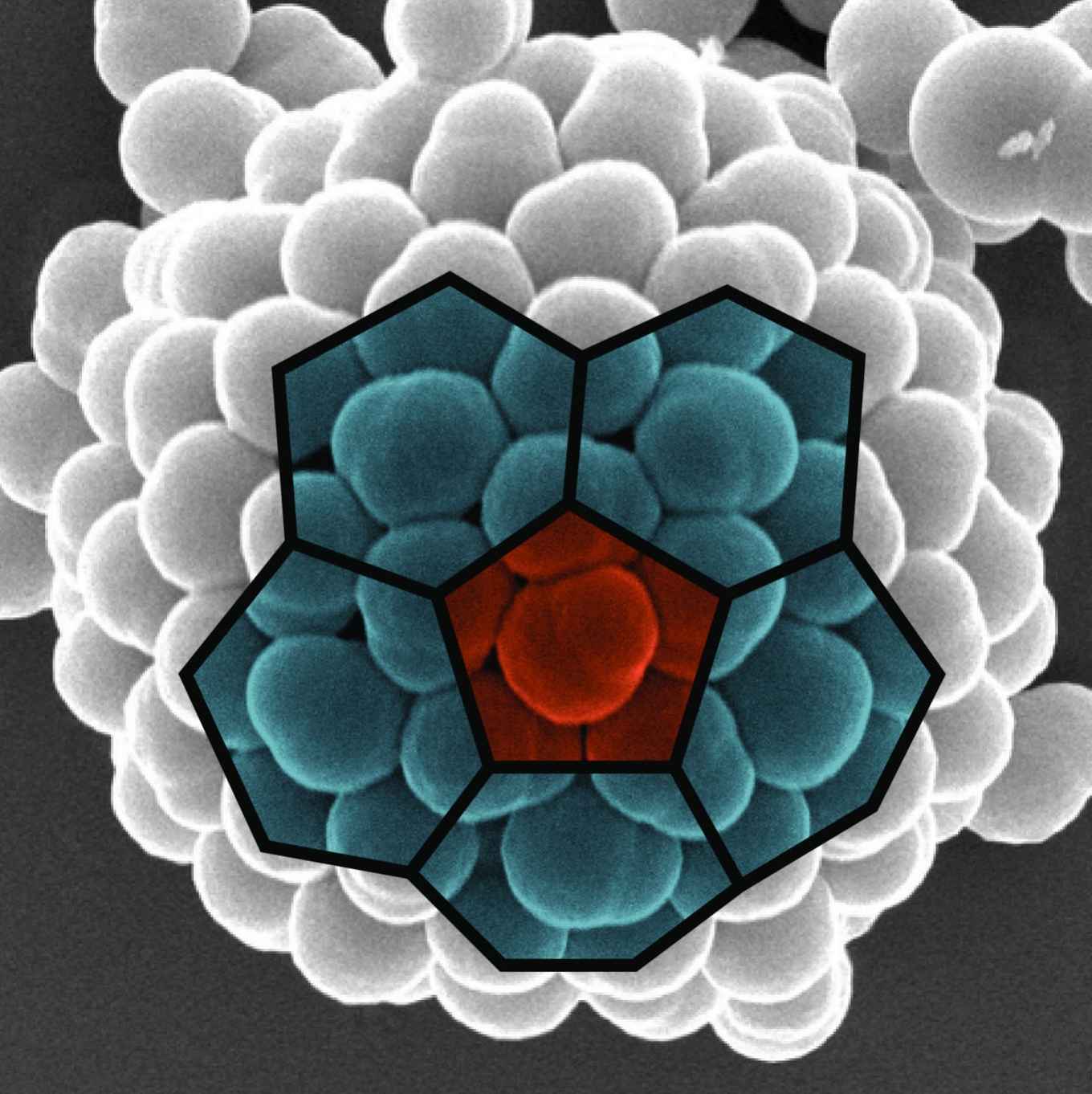The secrets of virus self-assembly
Nature publication on colloidal model system hints at crucial aspects
8 June 2016

To be able to study complex biomolecular processes such as the assembly of virus particles, researchers can make use of model systems of micrometer-sized colloidal particles. When properly designed these small plastic particles behave in a way that mimics the behaviour of biomolecular building blocks such as proteins. The main advantage of colloidal model systems is that these can be observed very easily through an optical microscope.
For the best performance of the model system the colloidal particles should display the most relevant properties of the biomolecular entities they represent. In the Nature paper Chris Evers and Willem Kegel from Utrecht University now present a new generation of colloidal particles displaying three principal properties of protein building blocks.
The particles are asymmetric, slightly deformable and display mutual attraction. According to the Utrecht researchers this combination of properties has never before been investigated in a colloidal model system. Already in the first experiments they observed the self-assembly of their model particles into virus-like structures. Additional experiments further established the relevance of the three properties.
Monte Carlo simulations

To support their observations with computational modeling the Utrecht chemists called in the assistance of their Amsterdam colleagues Jurriaan Luiken and Peter Bolhuis, who are experts in computer simulations of physico-chemical and biophysical phenomena. Luiken and Bolhuis performed Monte Carlo simulations to represent the behaviour of the colloidal model system. Thus they were able to rationalise the occurrence of curved surfaces of assembled microparticles, giving rise to the formation of the virus-like microcapsules.
'Since we used a generic simulation model, our calculations reinforce the experimental findings of Evers and Kegel', says Bolhuis. 'Their colloidal model system really displays a general phenomenon and the message is indeed that the three elements of a-symmetry, deformability and attraction are all necessary ingredients for virus-like assembly.'
Publication
Chris H.J. Evers, Jurriaan A. Luiken, Peter G. Bolhuis and Willem K. Kegel: Self-assembly of Microcapsules via Colloidal Bond Hybridization and Anisotropy. Nature, online publication 8 June 2016, DOI:10.1038/nature17956